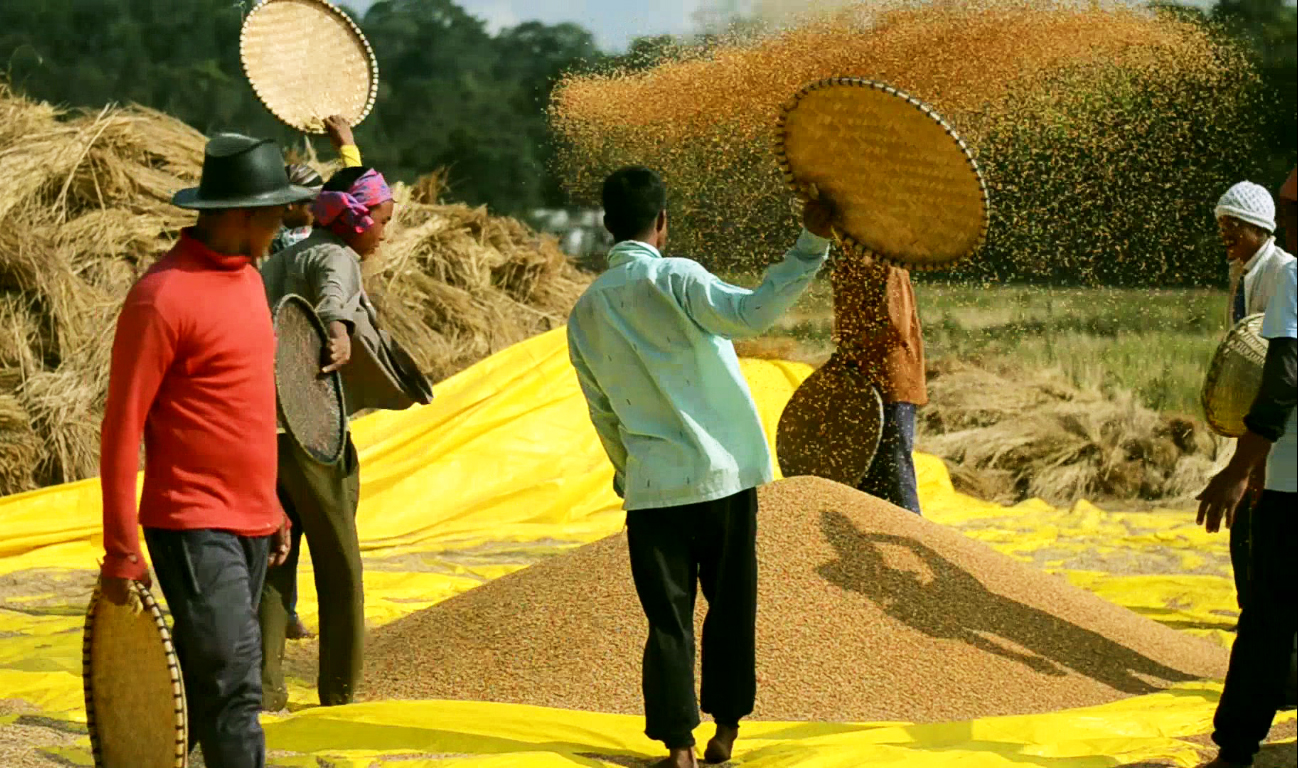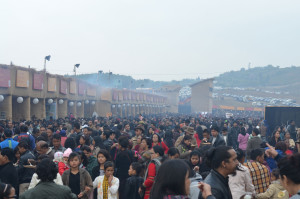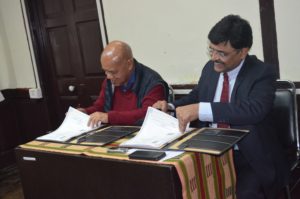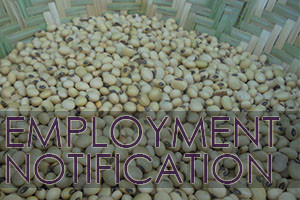
Photo: NESFAS/ Donboklang Majaw
23rd November is an annual public holiday in Shillong to celebrate the Seng Kut Snem festival. Most of us know it as the festival of the Khasi Community which is largely celebrated to preserve and exhibit their culture and traditions. It is also the foundation day of the Seng Khasimembers following the traditional Khasi faith or the Niam Khasi who gather to pay their respects to god.
However the Almanac calendar, or as it is popularly know, the old farmer’s calendar has a deeper story to share. The day is significant as it marks the end of the agrarian year and often seen as the thanksgiving day. For the farmers in Meghalaya it marks the end of autumn and the onset of winter, considered to be the close of the four seasons of the agricultural year. The farmers believe this to be the start of the New Year and the time of the sohthymmai (new fruit) when the harvest ends and winter fruits are ripe for picking likesohniamtra (khasimandarin), sugar cane, beans, tapioca, sohphlang, millets and more. This becomes the time for the communities to pay homage to the creator for the bountiful gifts of Mother Earth and her nature.

Photo: NESFAS/ Raisa Daimary
For the traditional farmers this is also a time to start planning the new agricultural year. Says SimorinMarbaning, a 76-year-old farmer, from Pyndengmawlaieh in the Lyngngam area, one of the ITM host villages where NESFAS has been working, “The meaning of Kut Snem for a farmer is that the field is ready to feed me and my family. It also signifies that we have to be ready to prepare the land for the next cultivation to provide Pahuhka bam kadih (flourishing harvest and food security)”. This simple statement is a reflection of the ties to the land that the farmers maintain from which are generated the songs and dances of tradition and culture. Incidentally this is also the time as the food is gathered, the land is reviewed for the next phase where the communities go into the forest and mark the area to begin the slashing for swidden /Jhum / shyrtie / shifting cultivation, the many names that have come up for a sustainable agricultural practice where the farmer respects the landscape for its long term security and soil fertility.
Pius Ranee from Nongtraw village in East Khasi Hills, now an Associate with NESFAS, Shillong, shares, “When I was child of 9, Seng Kut Snem was the day that my parents took me to the forest to share the tradition of harvest cycles. We as a family – My uncle, parents and grandmother went into the forest to select the site for the jhum cultivation. My memory of this day remains as every year we made this celebratory excursion for the family. The first day was of selection and a customary slashing of the forest, which would become a full-scale activity in the days to follow. Post this we had a picnic lunch by the river, fishing and games. One of the most enjoyable foods I remember was the mixture of banana stem with Dohsher, an indigenous fish, mixed with onion and chilli. The mother nature became our home as the riverside stones were our dishes and plates on which we cooked and ate. In Shillong I miss this connection to the land. Celebrations are there but of traditions and culture, roots of which are forgotten.” NESFAS is working on programs with the villagers to document these agro-biocultural links from which traditions are born and the well being at grass-root level remains. The challenge is cultivating these knowledge ties at the urban level as it is getting increasingly globalized and tradition is practiced for tradition’s sake. Says Phrang Roy, Coordinator, The Indigenous Partnership and Chairman of NESFAS, “This lacuna makes us realise that it is time that we start looking at indigenous peoples …our food providers and think of their practices as knowledge banks for future sustainability; And from that, plan ways to support them in areas of viability. For example in the case of the different views on Jhum cultivation, it is unfortunate that many of us do not see that shifting cultivation is still the bedrock of our community’s food security and therefore of our collective peace and harmony. There can be no peace in a community unless food security and food sovereignty are upheld. These issues lead to the long-term survival of our biocultural heritage of which the farmers are the true guardians and preservers of…and from which, if we look hard enough the tradition of Seng Kut Snem might have come from.”



